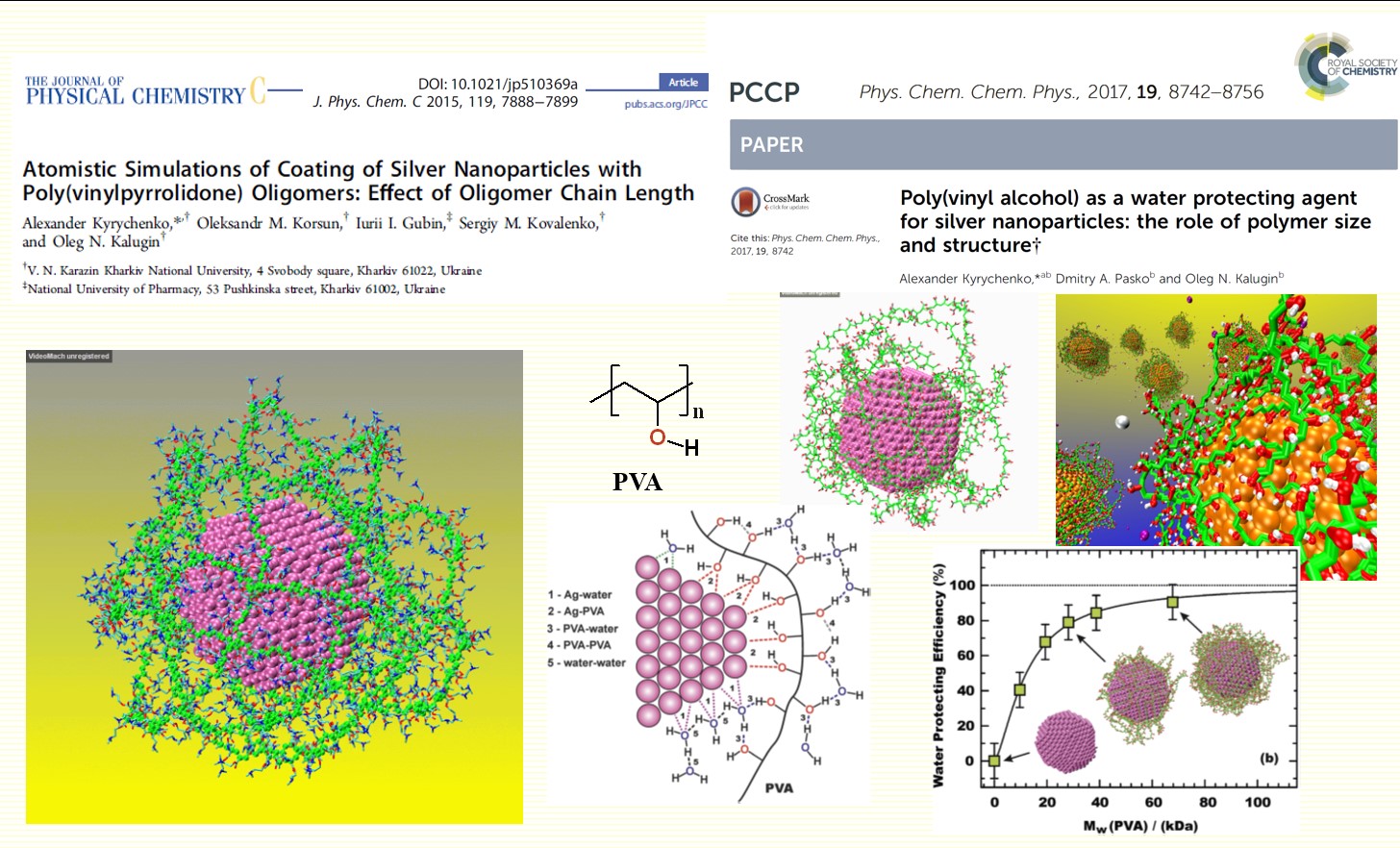Hybrid Organic/Inorganic Nanomaterials
 In the past decades, ligand-protected silver nanoparticles (AgNPs) have received much attention due to their broad potential applications in a variety of scientific fields, ranging from energy storage and conversion to drug delivery, biomedical in vivo imaging, photothermal therapy, and nanomedicine. AgNPs can be prepared by simple chemical reactions in solutions. They can be further functionalized with small organics or polymers, so that their surface chemistry is able to tune their optical/electronic properties. In addition, functionalized AgNPs can be further self-assembled into supramolecular nanomaterials.
In the past decades, ligand-protected silver nanoparticles (AgNPs) have received much attention due to their broad potential applications in a variety of scientific fields, ranging from energy storage and conversion to drug delivery, biomedical in vivo imaging, photothermal therapy, and nanomedicine. AgNPs can be prepared by simple chemical reactions in solutions. They can be further functionalized with small organics or polymers, so that their surface chemistry is able to tune their optical/electronic properties. In addition, functionalized AgNPs can be further self-assembled into supramolecular nanomaterials.
Fast-growing applications of engineered silver nanoparticles require a comprehensive understanding of a role of stabilizing agents, which is important for rational design and controlled synthesis of various AgNPs. Colloidal stability of silver nanomaterials also depends on chemical nature of a stabilizing agent. Chemical functionalization of an inorganic silver core plays an important role, because upon contact of its surface with water silver nanomaterials release free Ag+ ions into solution. Most Ag+ ion release occurs from oxidation of metallic nanosilver by dissolved oxygen, so that the release of Ag+ ions during the storage of AgNPs in solution results in narrowing of an application range of silver nanotechnology.
Organic stabilizing agents, proteins, peptides, and synthetic polymers were used in shape control of AgNP and other structured nanomaterials. It has now been recognized that the surface functionalization of AgNPs is of great significance for biomedical applications and targeted drug delivery. The binding ability of water-soluble polymers, such as polyvinylpyrrolidone (PVP) and poly(vinyl alcohol) (PVA), toward a silver surface provides a basis for mediated control of the nucleation, growth, organization, and shape-control of hybrid organic/inorganic Ag nanostructures.
Atomic-scale theoretical methods can provide important insight to solution-phase synthesis of silver nanostructures that involves the seeded growth and aggregation of silver clusters, as well as adsorption of stabilizing agents and solvent molecules onto the exposed facets of inorganic metal nanocrystals. Numerous MD simulation studies of metal nanoparticles protected by organic ligand monolayers, polymers, peptides, and proteins have been conducted. Combined DFT and classical MD simulations have proven to be important tools in guiding the shape-controlled synthesis of silver nanocrystals and elucidating the mechanisms of their facet selectivity.
Responsible person

Oleh Kaluhin
PhD in Chemistry, Associate Professor
Phone: +380 (57) 707-55-56
E-mail: chemdean@karazin.ua


